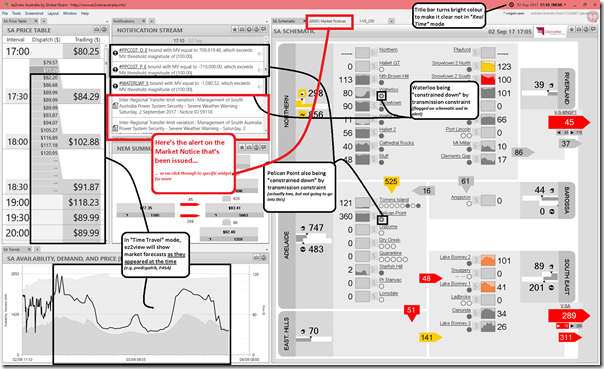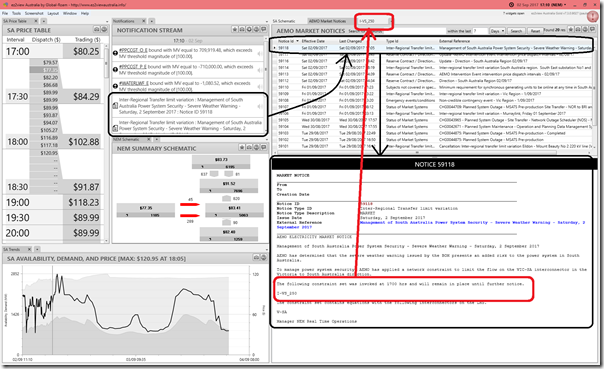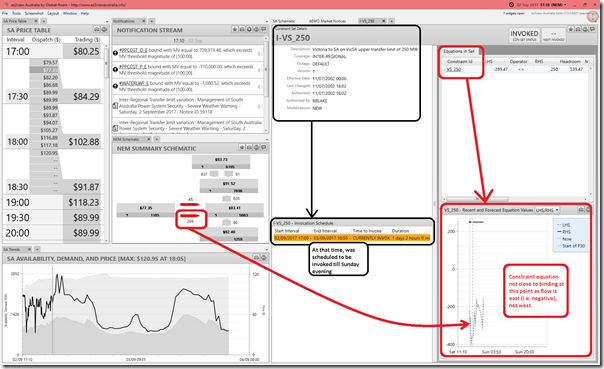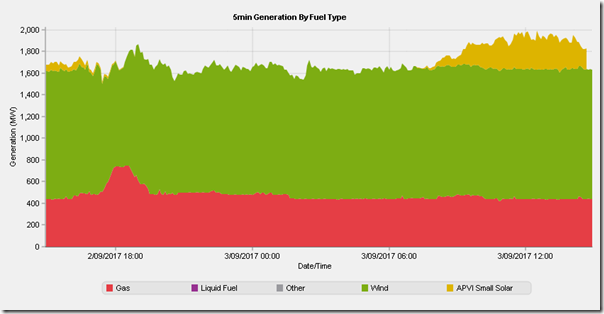Worth a quick post today (Sunday), using ”Time Travel” mode in ez2view to wind the display back to yesterday evening at 17:10 NEM time (so 16:40 in South Australia) to flag how AEMO responded to a “Severe Weather Warning” alert issued by the Bureau of Meteorology.
Here’s a first screenshot of what the market looked like at in this 17:10 dispatch interval on Saturday 2nd September 2017:
For the benefit of our newer clients (and longer-term clients who want a refresher) I’ve included a couple of annotations above to help in reading the image, and we’ll have more detailed information in the online help site in the coming weeks…
For the purpose of this article today, I’ve flagged the alert on the Market Notice in red, and indicated how we’d step into the specific widget to read more:
In the second image I’ve highlighted in red the key piece of information – about the constraint set “I-VS_250” being invoked until further notice (which we might presume to be until the weather warning had eased). In the third snapshot, we step through to the Constraint Set details widget to look at the specifics of that particular constraint set:
As shown in this 3rd image, this new constraint set contains only a single constraint equation, and this particular constraint equation was a long way from binding (at that point) because the surplus cheaper power in South Australia was leading to flows east on the interconnector, not west (with west being the direction of concern for AEMO).
The flow has continued eastwards in the 18 hours since that time due to the windy conditions (to now, 14:10 on Sunday 3rd September) so we have not seen this constraint binding. Here’s a history of production by fuel type in South Australia over a similar period from NEM-watch:
It shows aggregate wind output pretty constant at 1,200MW for the day (with the output being capped at that level by the “S_WIND_1200_AUTO” constraint, viewable in ez2view ), so reasonable to believe that output would be higher, without that constraint.






Leave a comment